
Albert Kahn was an American industrial architect. He was accredited the architect of Detroit and designed industrial plant complexes such as the Ford River Rouge automobile complex. He designed the construction of Detroit skyscrapers and office buildings as well as mansions in the city suburbs. He led an organization of hundreds of architect associates and in 1937, designed 19% of all architect-designed industrial factories in the United States. Under a unique contract in 1929, Kahn established a design and training office in Moscow, sending twenty-five staff there to train Soviet architects and engineers, and to design hundreds of industrial buildings under their first five-year plan. They trained more than 4,000 architects and engineers using Kahn's concepts. In 1943, the Franklin Institute posthumously awarded Kahn the Frank P. Brown Medal.

The Old Martin County Court House, built in 1937, is a historic Art Deco style courthouse building located at 80 East Ocean Boulevard in Stuart, Martin County, Florida. In 1989, it was listed in A Guide to Florida's Historic Architecture, published by the University of Florida Press. On November 7, 1997, it was added to the U.S. National Register of Historic Places. On March 15, 2007, it was added to the Martin County Historic Register by the Martin County Historic Preservation Board. It is now known as the Courthouse Cultural Center and is the headquarters of the Arts Council, Inc., the designated local arts agency for Martin County.
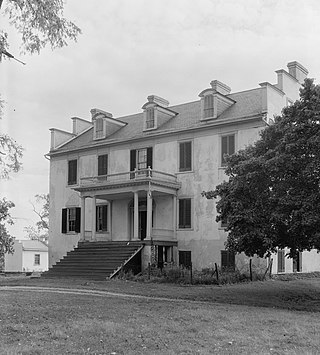
Woodbury or Woodberry, is a historic mansion located near Leetown, Jefferson County, West Virginia. It was built in 1834-1835 for the jurist and Congressman Henry St. George Tucker, Sr. (1780–1848). Tucker lived at Woodbury from its construction until 1844.
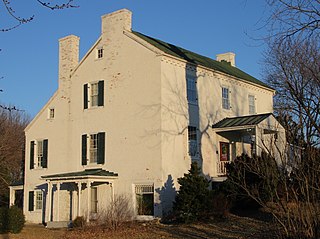
Rock Spring is a historic farmstead property near Shepherdstown, West Virginia.
Snyder House may refer to:

Entranceways at Main Street at Lamarck Drive and Smallwood Drive are a set of complementary residential subdivision stone entranceways built in 1926. They are located on Main Street in the hamlet of Snyder, New York within the town of Amherst, which is located in Erie County. These entranceways are markers representing the American suburbanization of rural areas through land development associated with transportation on the edges of urban developments. The Smallwood entranceway is a pair of symmetric groupings of stone gatehouses and posts flanking the two sides of the drive at Main Street. The Lamarck entranceway is a pair of Y-shaped and U-shaped stone half-walls flanking the two sides of the drive at Main Street. The entranceways were added to the National Register of Historic Places on December 7, 2005.

Spring Hill Cemetery Historic District is a national historic district located at Charleston, West Virginia. The district is a 172-acre (70 ha) site located on a series of tree shaded and landscaped hills overlooking central Charleston and includes the following cemeteries: Spring Hill Cemetery, Mountain View Cemetery, B'nai Israel Cemetery, Lowenstein Cemetery, and Mount Olivet Cemetery. It is West Virginia's largest cemetery complex. The district features Spring Hill Mausoleum, a stone faced reinforced concrete structure constructed in 1910. Notable graves throughout the cemetery include the following:
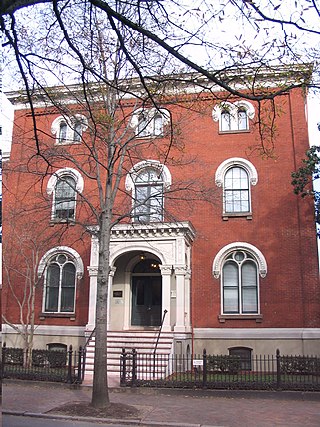
The William H. Grant House, also known as Sheltering Arms Hospital, is a historic house located in Richmond, Virginia. It was built in 1857, and is a large, three-story brick townhouse in the Italianate style. It features a small, richly ornamented arched front porch supported by coupled square columns. In 1892, the house was acquired by the Sheltering Arms Hospital, who occupied it until 1965. It is connected to the Benjamin Watkins Leigh House.

The Benjamin and Mary Ann Bradford House is a private house located at 48145 Warren Road in Canton, Michigan. It was listed on the National Register of Historic Places in 2000.

The Thomas and Isabella Moore Clyde House is a private house located at 50325 Cherry Hill Road in Canton Township, Michigan. It was listed on the National Register of Historic Places in 2003.

The Worland House was built in 1917 in Worland, Wyoming for local businessman Charlie Worland and his wife Sadie. Worland was the son of C.H. "Dad" Worland, the founder of the town of Worland, and was a noted local entrepreneur.
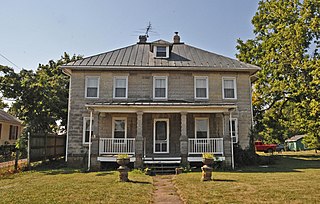
George Schlack House is a historic home located near Ridgeway, Berkeley County, West Virginia. It was built in 1913 and is a 2+1⁄2-story rectangular Colonial Revival style dwelling built of concrete block and finished in rock-faced concrete block. It is five bays in width and four bays deep with a truncated hipped roof and denticulated trim.

Oglebay Hall is a historic classroom building associated with the West Virginia University and located at Morgantown, Monongalia County, West Virginia. It was built in 1918, and is a three-story, brick and concrete building with Classical Revival detailing. The front facade features four Doric order columns that support a pediment with a false, concrete railing and entablature with the building's name. It also has balconies with cast iron balustrades. It originally housed the university's College of Agriculture and represents the university's heritage as a land-grant institution. The building is named for industrialist and philanthropist Earl W. Oglebay, whose house at Wheeling, West Virginia is known as the Oglebay Mansion Museum.

H. C. Ogden House, also known as the Wise-Ogden House, is a historic home located at Wheeling, Ohio County, West Virginia. It was built in 1893, and is a 2+1⁄2-story, T-shaped, Queen Anne-style frame dwelling. It features a deep, full-width front porch with Doric order columns, a round tower with domed roof, and coursed wood shingles. The house has 5 bedrooms, 4 bathrooms, 1 half-bath, 1 kitchen, and 9 additional rooms. The house was built for Herschel Coombs Ogden (1869-1943), a publisher, community leader, and businessman significant in the history of West Virginia.

"Edemar", also known as Stifel Fine Arts Center, is a historic house and national historic district located at Wheeling, Ohio County, West Virginia. The district includes two contributing buildings and two contributing structures. The main house was built between 1910 and 1914, and is a 2+1⁄2-story, brick-and-concrete Classical Revival mansion with a steel frame. The front facade features a full-width portico with pediment supported by six Corinthian order columns. Also on the property are a contributing brick, tiled-roofed three-bay carriage barn/garage; fish pond; and formal garden. The Stifel family occupied the home until 1976, when the family gave it to the Oglebay Institute to be used as the Stifel Fine Arts Center.

Gov. H. Guy Kump House is a historic home located at Elkins, Randolph County, West Virginia. It was designed by noted Washington, D.C.-architect Clarence L. Harding and built in 1924–1925, as a home for West Virginia Governor Herman G. Kump (1877–1962) and his wife Edna Hall Scott Kump (1887–1957). It is a 2+1⁄2-story, 42 foot square, red brick dwelling with a steeply pitched, slate covered gable roof. The front facade features a shallow Doric order entrance portico and it has a porte cochere and sun porch. The house is in a Neo-Federal Revival style with Neo-Georgian Revival elements. In 2008, the house was willed to the city of Elkins.
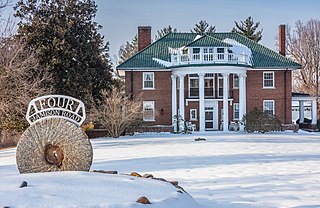
Kanawha, also known as Tuckahoe, is a historic home located at Luray, Page County, Virginia. It was built in 1921, and is a 2+1⁄2-story, Classical Revival style brick and tile-block dwelling on a poured-concrete foundation. It has a hipped roof covered with green Spanish tiles. The front facade features a semicircular Corinthian order portico. The house also has an enclosed Doric order rear portico, a porte-cochère, large hipped dormers, and a symmetrical composition. Also on the property are contributing gate pillars, an outbuilding, and weirs. The property was developed by Luray businessman and mayor Vernon H. Ford.

Harrisonburg Downtown Historic District is a national historic district located at Harrisonburg, Virginia. The district encompasses 161 contributing buildings, 1 contributing structure, and 2 contributing objects in the central business district of Harrisonburg. The district includes a variety of commercial, residential, institutional, and governmental buildings dating from the late-18th to mid-20th century. There are notable examples of the Queen Anne and Greek Revival styles.
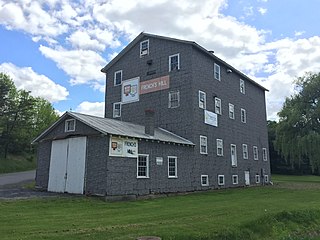
French's Mill is a historic grist mill at the junction of Augusta-Ford Hill and Fairground Roads in Augusta, West Virginia. Its main building is a three-story wood-frame building with a metal roof, asphalt siding, and a concrete foundation. It was built in 1911 on the site of a c. 1890s grist mill that was destroyed by fire. The mill, which was originally water-powered, was converted to operate by electric power in 1949, and ceased operations in 2000. It was also updated in the mid-20th century to accommodated different types of grain, illustrating the evolutionary change of these industrial facilities.





















